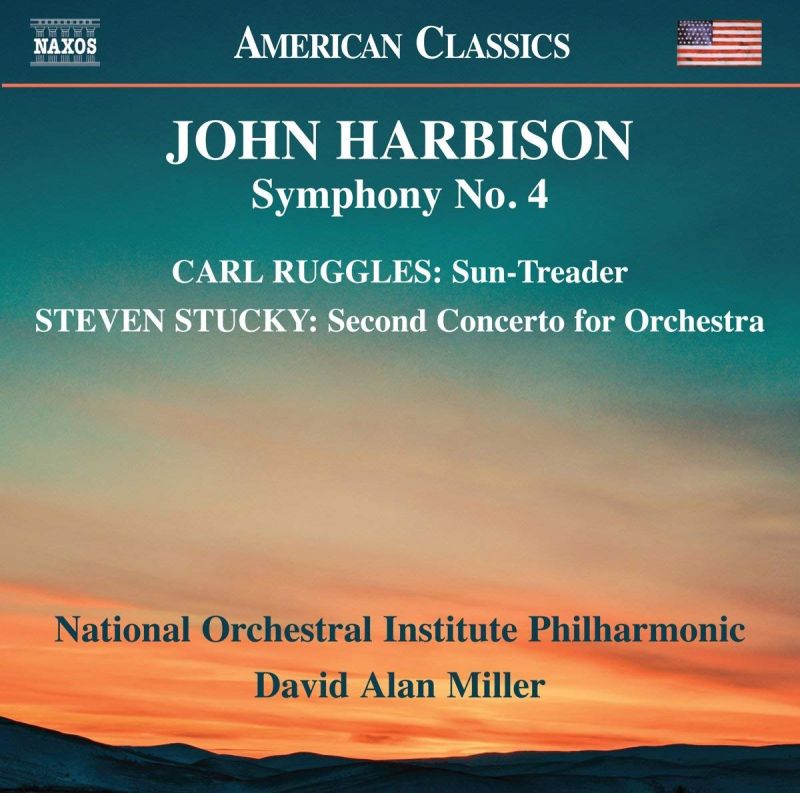HARBISON Symphony No 4 STUCKY Concerto No 2
View record and artist detailsRecord and Artist Details
Composer or Director: John H. Harbison, Carl (Sprague) Ruggles, Steven Stucky
Genre:
Orchestral
Label: Naxos
Magazine Review Date: 09/2018
Media Format: CD or Download
Media Runtime: 65
Mastering:
DDD
Catalogue Number: 8 559836

Tracks:
| Composition | Artist Credit |
|---|---|
| Sun-treader |
Carl (Sprague) Ruggles, Composer
Carl (Sprague) Ruggles, Composer David Alan Miller, Conductor National Orchestral Institute Philharmonic Orchestra |
| Concerto for Orchestra No 2 |
Steven Stucky, Composer
David Alan Miller, Conductor National Orchestral Institute Philharmonic Orchestra Steven Stucky, Composer |
| Symphony No 4 |
John H. Harbison, Composer
David Alan Miller, Conductor John H. Harbison, Composer National Orchestral Institute Philharmonic Orchestra |
Author: Jed Distler
Harbison’s five-movement Fourth Symphony has a lot more to say. Contrary to the annotator, I don’t perceive the opening Fanfare as bombastic but rather playful and unpredictably jazzy. By contrast, the Intermezzo presents a back-and-forth discourse between sections of the orchestra, characterised by strategic silences, long resonances and expansive string solos. At first the central Scherzo’s syncopations seem to have been appropriated from the Copland/Bernstein playbook, yet Harbison’s voice ultimately governs the music’s dry wit and lightness of being. The Threnody’s sense of melodic tension and release proves quite harrowing. If the finale’s opening section and concluding dance seem more conventionally symphonic and less inventive by comparison, an arresting passage featuring mallet percussion more than compensates. One cannot fault the sheen and precision that Ludovic Morlot and the Boston Symphony brought to their live 2011 recording, yet the nod goes to Miller’s faster and shapelier treatment of the Scherzo and more variegated string phrasing in the Threnody.
For all of the undeniable power and focused blend that the remarkable young National Orchestral Institute Philharmonic musicians bring to Carl Ruggles’s Sun-Treader, I prefer the closer, more vivid detailing, clearer linear strands and more assiduous transitions throughout the still sonically viable Tilson Thomas/Boston recording from the early 1970s. Still and all, this disc amounts to a major and highly recommendable achievement.
Discover the world's largest classical music catalogue with Presto Music.

Gramophone Digital Club
- Digital Edition
- Digital Archive
- Reviews Database
- Full website access
From £8.75 / month
Subscribe
Gramophone Full Club
- Print Edition
- Digital Edition
- Digital Archive
- Reviews Database
- Full website access
From £11.00 / month
Subscribe
If you are a library, university or other organisation that would be interested in an institutional subscription to Gramophone please click here for further information.




